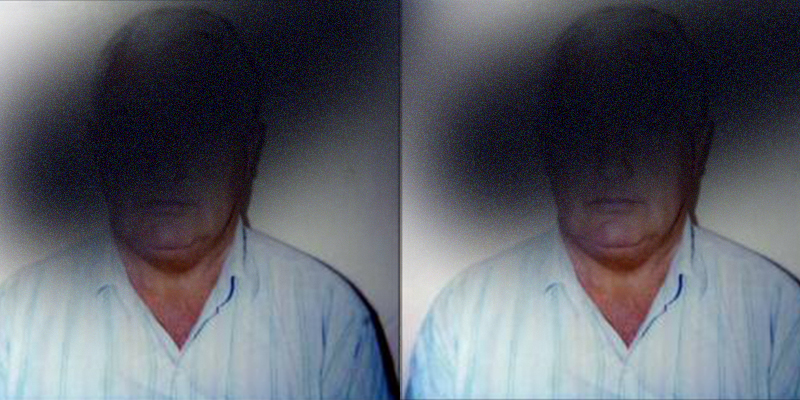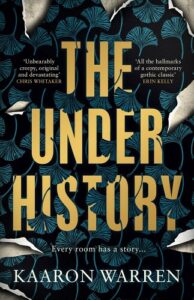The Underhistory began with a box of old postcards. Written in the 1920s and 1930s, they were from an artist travelling Europe, notes back home to his wife and sons. They had a lovely tone to them. Even when he met royalty, his postcard said, ‘look after Mummy and we’ll get you a bicycle when I come home.” Sometimes Mummy travelled with him and there were letters home to the boys, who I imagined were having a great time themselves.
In reading these dozens of postcards, I came to feel I knew the family, and to have an affection for them. On researching the artist, William Ashton, I found that he was famous in his day. A favorite and good friend of Australian Prime Minister Robert Menzies, he is almost unknown today, to the extent that when I looked in his file at our National Library, there was only one article in it.
“Artist’s Widow Victim of the Granny Killer”.
I sat at the library table, tears pricking my eyes. The Granny Killer was an awful man who murdered six women in Sydney in the 1980s. I couldn’t bear the thought of ‘Mummy’, Mrs Ashton, who’d supported her brilliant husband, made those boys a good home, had her own Europe adventure, falling victim to that man.
It wasn’t the first Mrs Ashton, though. She’d died quite young (just as tragic, of course, but at least not at the hands of an evil man), leaving Will Ashton to his boys. He was sick himself, and it was his nurse who became the second Mrs Ashton. She was left a widow after only three years, in 1963.
She was the victim of the Granny Killer. She was the ‘artist’s widow’, even though around 25 years had passed. As my emotional response settled, another thought took over. Why is she still named ‘artist’s widow’, as if she hadn’t had a life of her own? She’s labelled ‘granny’, as all six women were, regardless of if they were grannies. They took that label simply because of that age. The label classifies them, as it does any woman. She was Lady Winifred Ashton.
She wasn’t the last of the Granny Killer’s victims.
That was Joan Sinclair. She was sixty, but because she was one of his victims she was labelled ‘old lady’ and ‘granny’. She was apparently having an affair with John Wayne Glover, the killer. He must have had some charm, I guess. He’d been a pie salesman, believe it or not, and I guess he spent a lot of time talking to people. He’d delivered to care homes for the elderly and behaved in the most disgusting manner to some of the inhabitants. He was caught doing that and sacked. So he somehow charmed Joan, and they were seeing each other. I’ve heard that to live a life a crime takes a lot of people skills; you need to be able to convince people to do what you want them to do, and to trust you, and to believe in your innocence.
Maybe he could do all of that.
The police had John Glover high on their list of suspects, to the extent they were following him. Whether or not he knew this I’m not sure, but I think he did. He went to visit his ‘girlfriend’ Joan, entering her house. The police were outside, watching and waiting.
By the time they decided to go in, Glover had murdered Joan and made an attempt on his own life.
*
I HATED this. I hated that Joan lost her life, that this pathetic man stole her from family and friends, from her life. I hated this for all of his victims, but it was such a knife’s edge with Joan. If the police had broken in sooner? She could have had another 30 or 40 years.
John Irving’s brilliant essay “Trying to Save Piggy Sneed” talks about the reason he writes. He imagines and re-imagines better endings, different backstories, to things that have upset him. In particular, he talks about Piggy Sneed, a maintenance man and pig owner who died in a fire. Irving and his friends were close by when it happened and, unable to bear the idea of the man dying, Irving stood on the street and invented an alternative story, where the man had sold his pigs and gone to the city. For a few minutes, they all believed this. Irving believed it, even though he was inventing it.
This is true for me, and in particular in The Underhistory. I wanted to give life back to Lady Ashton, and Joan, and all the young girls killed, all the older women, the victims of domestic violence; anyone taken too soon. I wanted to imagine another life where they had the chance, at least, to fight back.
Pera Sinclair, the main character in The Underhistory, formed as I watched old news reels and home movies of Robert Menzies. I’d received a Fellowship from the Museum of Australian Democracy, which is located in Old Parliament House, a 500-roomed building with offices still containing memos from the 1950s and is heritage listed, so has rooms full of doors and lists of everything found in the walls.
And ghosts, of course.
I got the Fellowship because of my research into William Ashton and his friendship with Robert Menzies, and by extension the relationship of art to Prime Ministers and what their choices say about them. As I read dusty files no one else had read for years, it came to me I was looking at the underhistory, the stuff that happens beneath, and just like that I had a title for my novel.
The Menzies’ home movies played continuously in one of the drawing rooms, and often I sat there watching and writing and absorbing. One young girl in particular stood out for me. She danced amongst flowers in front of a stately home, while the adults chatted and shifted about and ignored her. I LOVED her, and she became Pera as a child.
Just like that.
Writers are supposed to be nonjudgemental so we can create interesting characters, apparently. I did that with some of the home invaders, trying to give them humanity beyond their worst act, because I didn’t want them to be purely ‘bad guys.’
With Chook, the man inspired by John Wayne Glover, I wasn’t so kind.
***


















